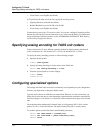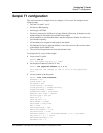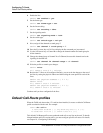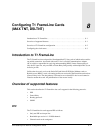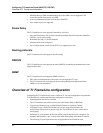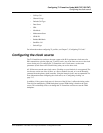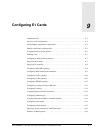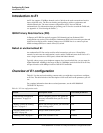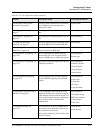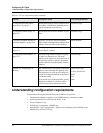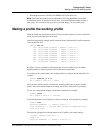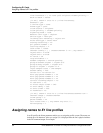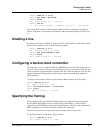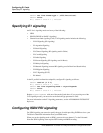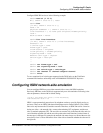
9-2 Preliminary May 9, 2000 APX 8000/MAX TNT/DSLTNT Physical Interface Configuration Guide
Configuring E1 Cards
Introduction to E1
Introduction to E1
An E1 line supports 32 64Kbps channels, each of which can be used to transmit and receive
data or digitized voice. The line uses framing and signaling to achieve synchronous and
reliable transmission. The most common configurations for E1 lines are PRI and
unchannelized. (For information about provisioning your E1 line for use with the TAOS unit,
see Appendix A, “Provisioning the Switch.”)
ISDN Primary Rate Interface (PRI)
In Europe, an E1/PRI line typically supports 30 B channels and one D channel. PRI
configurations are used to receive multiple, simultaneous ISDN calls from analog-modem and
digital-services dial-in traffic. Another common use of E1/PRI lines is to connect a private
branch exchange (PBX) to a central office (CO) switch.
Nailed or unchannelized E1
An unchannelized E1 line can be used for nailed connections such as to a Frame Relay
network. In such cases the configuration is static, and the TAOS unit treats the E1 line as if it
were a single connection at a fixed speed, without individual channels.
Typically, when you pay your telephone company for a leased (nailed) line, you pay more for
higher bandwidth. Anything in the range of 0bps to 2.048Mbps can be delivered on an E1 line,
and provisioned at some 64Kbps fraction of the full E1 bandwidth.
Overview of E1 configuration
Table 9-1 lists the sections describing common tasks you might have to perform to configure
an E1 line. The table includes a brief description of each task, and lists the parameters you will
use.
For complete information about the associated parameters, see the APX 8000/MAX
TNT/DSLTNT Reference.
Table 9-1. E1 line configuration tasks
Section Description of task Associated parameters
“Understanding configuration
requirements” on page 9-4
Before configuring your E1 line, gather the
necessary information from your E1 service
provider.
N/A
“Making a profile the working
profile” on page 9-5
Before you can edit a profile, you must make
it the working profile.
N/A
“Assigning names to E1 line
profiles” on page 9-6
Assign a name to the E1 profile. Name
“Enabling a line” on page 9-7 Make a line available for use. Enabled



